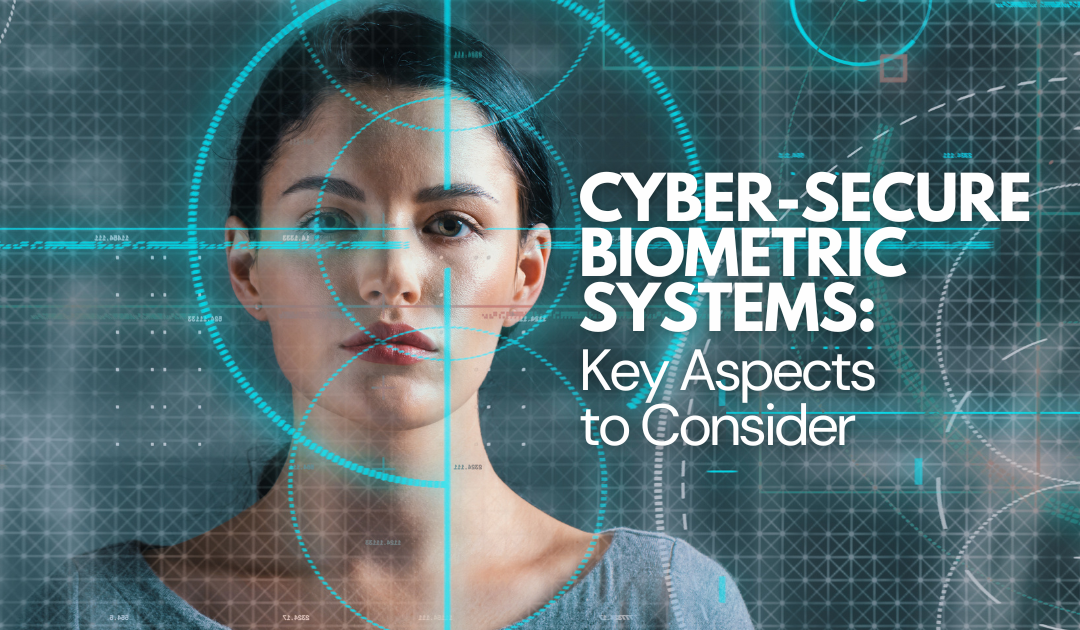Co-written with Edsel Shreve, General Manager, BioConnect AI
Ensuring high levels of security is paramount for organizations, especially in today’s digital age. Biometric systems, known for their unique identification methods, have become a crucial component in safeguarding data and infrastructure. These biometrics systems are inherently built for security and to operate in the highest security environments but in many cases, there are additional security requirements to ensure an even high level of secure operation. Let’s explore other aspects of a cyber-secure biometric system, focusing on the components that make it resilient against various threats.
Device Security
Vandal-Proof Design
A robust biometric system starts with physical security. Devices must be designed to withstand intentional damage or tampering. Vandal-proof designs usually incorporate reinforced materials and secure mounting mechanisms to prevent unauthorized removal or destruction.
Anti-Tamper Capabilities
Anti-tamper features are not standard in most biometric systems but may be required to protect against device manipulation or theft. An example of this is that once a device is physically removed from its backplate and/or network, it has a certain amount of time to be reconnected or the device wipes itself of all data and function—similar to a Mission Impossible message! Ultimately this extra layer of protection helps ensure the integrity of the system by preventing unauthorized access or data breaches through physical intervention.
Data Security
On-Device Security
Data security is a top priority, and it starts at the device level. Advanced biometric systems store data in encrypted formats, ensuring that even if the device is compromised, the data remains inaccessible. Secure boot processes and firmware integrity checks add additional layers of protection.
In Transit Security
Protecting data while it’s being transmitted between devices and servers is critical. Strong encryption protocols such as TLS (Transport Layer Security) are used to secure data in transit. Regular certificate renewals further enhance this security, reducing the risk of man-in-the-middle attacks.
TLS Encryption with Certificate Renewal
TLS encryption creates a secure channel for data transmission, ensuring that sensitive information like biometric data and user credentials are protected from interception. Regularly renewing encryption certificates ensures that the security protocols remain up-to-date and resistant to emerging threats.
Network Security
802.1X Compliance
For network security, compliance with standards such as IEEE 802.1X is vital. This standard provides an authentication mechanism for devices wishing to connect to a network, ensuring that only authorized devices can access network resources. Implementing 802.1X compliance helps prevent unauthorized access and mitigates the risk of network-based attacks.
Certificate Rotation and Renewal
Regularly rotating and renewing certificates is another crucial aspect of network security. It helps prevent unauthorized access by ensuring that only devices with valid, up-to-date certificates can communicate within the network. This practice also reduces the risk of expired certificates being exploited by attackers.
Communication Protocol
OSDP Communication Between Readers and Panels
The Open Supervised Device Protocol (OSDP) is increasingly becoming the standard for secure communication between biometric readers and control panels. OSDP supports bi-directional communication, which enhances security by allowing continuous monitoring and configuration of devices. Its encryption capabilities ensure that communication between devices is secure, preventing eavesdropping and tampering.
Cloud Solutions
SOC II Certified Solutions
Cloud-based biometric systems offer scalability and flexibility, but they also introduce new security challenges. Ensuring that your cloud solution is SOC II certified provides peace of mind. SOC II certification indicates that the service provider adheres to strict information security policies, ensuring the protection of data stored in the cloud. This includes aspects like data encryption, access controls, and regular security audits.
Securing Biometric Infrastructure
Incorporating these defining aspects into a biometric system can significantly enhance its security posture. By focusing on device security, data security, network security, secure communication protocols, and SOC II-certified cloud solutions, IT professionals, system integrators, and security enthusiasts can develop resilient biometric systems that safeguard against evolving threats.


